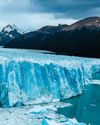WORLD'S BIGGEST SPACE AGENCIES
How It Works UK
|Issue 206
Between their rivalries and collaborations, how have the world's top national space agencies contributed to our knowledge of the cosmos?

LUNAR TOUCHDOWN
The National Aeronautics and Space Administration (NASA) was founded in response to the Soviet space agency's first satellite launch. Different branches of the US military had been working on building satellites, but after realising they were behind in space technology, the US decided to start up a designated space agency. This early competition for the Soviet Union led to what became known as the Space Race, to see which space agency could reach space first and showcase its country's spacefaring superiority. Although the US was beaten in sending the first human-made object into space, NASA won the Space Race by putting a human on the Moon.
The first American astronaut to orbit Earth was Alan Shepard, who NASA launched into space in 1961. Just 20 days later, the Apollo space program was initiated. This was the space agency's mission to the Moon. Eight years later, on 20 July 1969, the Apollo 11 mission brought Neil Armstrong and Buzz Aldrin onto the lunar surface. But this success was not achieved without harsh lessons to be learned. The Apollo 1 mission in 1967 resulted in three astronauts losing their lives in a fire on the launchpad. The tragedy significantly improved NASA's safety protocols and spacecraft features, including fire-resistant materials.
 FIRST HUMANS IN SPACE
FIRST HUMANS IN SPACEEsta historia es de la edición Issue 206 de How It Works UK.
Suscríbete a Magzter GOLD para acceder a miles de historias premium seleccionadas y a más de 9000 revistas y periódicos.
¿Ya eres suscriptor? Iniciar sesión
MÁS HISTORIAS DE How It Works UK
How It Works UK
20 WEARABLE HEALTH TRACKERS
Whether you strap a wellness coach to your wrist or weave subtle sensors into your clothes, these devices are revolutionising how we track our health
9 mins
Issue 210
How It Works UK
SUPERPOWERED PLANTS
The world of plants is vibrant and diverse, just like this book.
1 min
Issue 210
How It Works UK
SECRET STORIES OF LOST BEASTS
We're all aware of the mighty dinosaurs that once roamed Earth, but there are so many weird and wonderful species that have been lost to time.
1 min
Issue 210

How It Works UK
ALL ABOUT BLIMPS
Is it a bird? Is it a spaceship? No... it's a non-rigid airship
2 mins
Issue 210
How It Works UK
SUPER QUESTERS MISSION: RAINFOREST MAGIC
Join adventurers Leo, Lilli and Bea as they transform into superheroes and journey to the rainforest in the pursuit of knowledge.
1 min
Issue 210

How It Works UK
HOW THE MIGHTY MAMMOTH RULED THE ICE AGE
Meet the prehistoric giants that roamed the Arctic Circle thousands of years ago
4 mins
Issue 210
How It Works UK
Have they found LIFE ON MARS?
Although it's by no means certain, scientists are slowly accumulating evidence that life once existed on the Red Planet
2 mins
Issue 210

How It Works UK
HOW FAST DO GLACIERS MOVE?
The speed at which a glacier flows depends on its mass, the depth and slope of the underlying rock bed and friction.
1 min
Issue 210

How It Works UK
HOW IN-FLIGHT WI-FI WORKS
This technology allows you to scroll to your heart's content while killing time at cruise altitude
3 mins
Issue 210

How It Works UK
HOW WIGWAMS WERE BUILT
Discover the construction and living conditions inside these traditional domed dwellings
1 mins
Issue 210
Listen
Translate
Change font size

